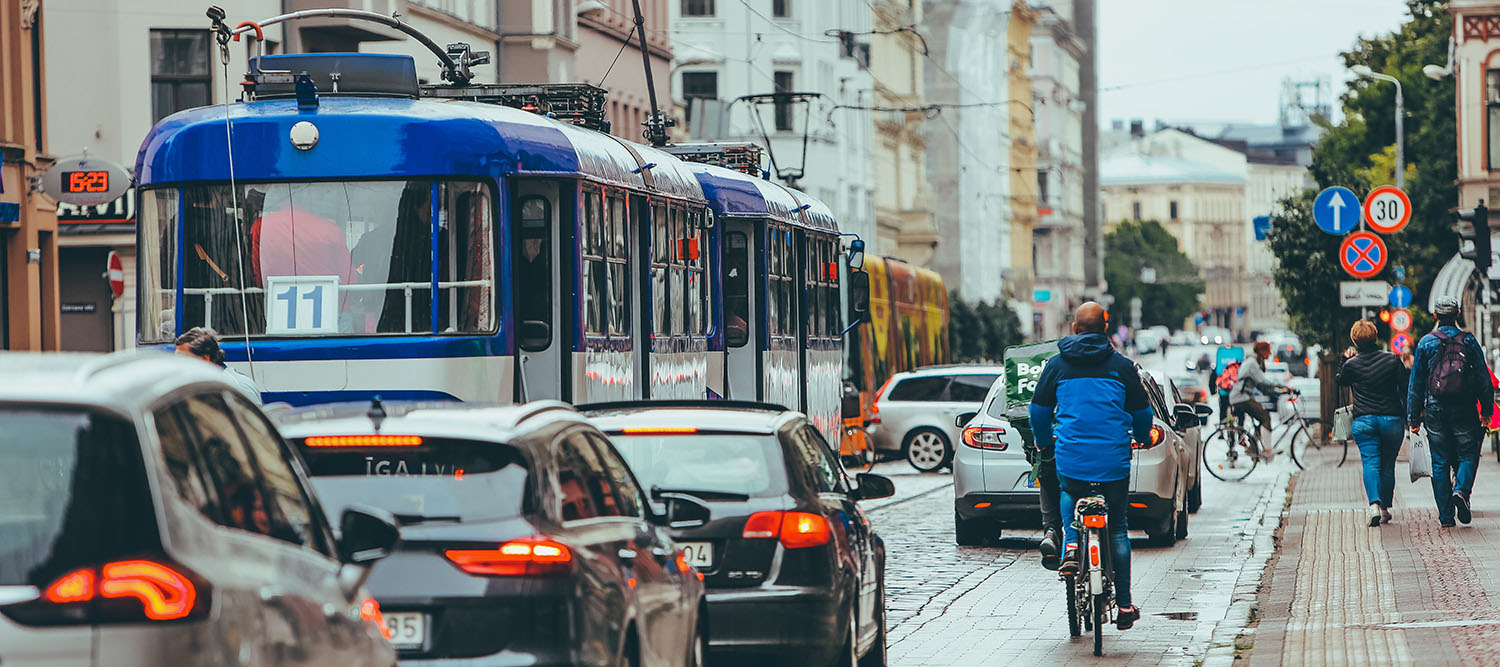He paves the way for sustainable transport with a combination of data sources

Imagine an app that could plan your trip, combining different modes of sustainable transport, and guide you in real time to arrive at a specific time while maximizing shade from tree canopies along the route – taking into consideration the movement of the sun and also making sure that you expend as little or much body energy as possible. It does seem handy, but what really interests KTH researcher Takeshi Shirabe is how you would combine different types of data sources to make this possible.
Perhaps Takeshi Shirabe’s interest in combining data sources comes from his own background and insights along the way. A trained engineer from Tokyo, Japan who went on to study planning and geographic information systems, GIS, in Pennsylvania, USA and then coming to Vienna, Austria, to continue with computer science and mathematics before ending up in Stockholm at KTH.
Unlike Sim City, real cities give permission
This combination seems apt for someone with an interest for urban planning, and particularly spatial urban planning, i.e. where to build houses, lay railway tracks etc. Along the way he has also come to realise that urban planning is far from Sim City.
“In the real world you can’t just place buildings on a blank canvas, you have to adapt to what is already available”, explains Takeshi Shinabe. “It’s much more organic, you could say that cities give permission to different changes or activities.”
Combining data sources to allow a combination of transport modes
As a result of his insights, Takeshi Shirabe has changed his focus to improvements of GIS, including statistics and algorithms. While his primary interest lies in the theoretical contribution he has seen some obvious applications for his work.
“There are several different kinds of sustainable transportation modes in a city, each with its own possibilities and limitations. A pedestrian moves in a different way than someone on a bicycle, in public transport, on a scooter or in a wheelchair. By creating an urban environment that caters to their needs – and facilitates combining different modes of transport - you promote environmental, economic and social sustainability.”
What Takeshi Shirabe describes is the project SUM-Net: Sustainable Urban Mobility Network. A project with funding from the research council Formas that has already begun and will take off in June with a doctoral student in place. In its core lies an integrated spatial database with a combination of data – rasterized, vectorised and graphic – that require different algorithms. This is the more scientifically demanding part of the project, which could perhaps be likened to combining pieces of a puzzle, lego bricks and wooden building blocks in a way that appears seamless to the user.
Solutions for governmental agencies as well as citizens
The project has two user groups in mind – who probably couldn’t care less about the inner workings of the data management. One is governmental agencies that could measure and assess citizens’ sustainable accessibility to various services and facilities for urban planning purposes. Takeshi intends it to be developed in collaboration with regions and municipalities. The other is the travellers themselves, including those with physical or social disabilities, who could better customize routes for their specific needs, whether it be speed, price, energy spent, time or avoiding curb sides – an invisible obstacle to many but a challenge for some wheelchair users.
Takeshi Shirabe says he likes to take risks that could yield higher returns, and he thinks the theoretical investment that goes into the integrated spatial database could have more unforeseen uses in the future. That is the charm of working in the theoretical forefront, to not necessarily have a specific use in mind.
Text: Johan C Thorburn
This is the 31st article in the School of Architecture and the Built Environment 's series of articles on selected research, education or collaboration initiatives from each department. You can find the previous articles here: Archive

